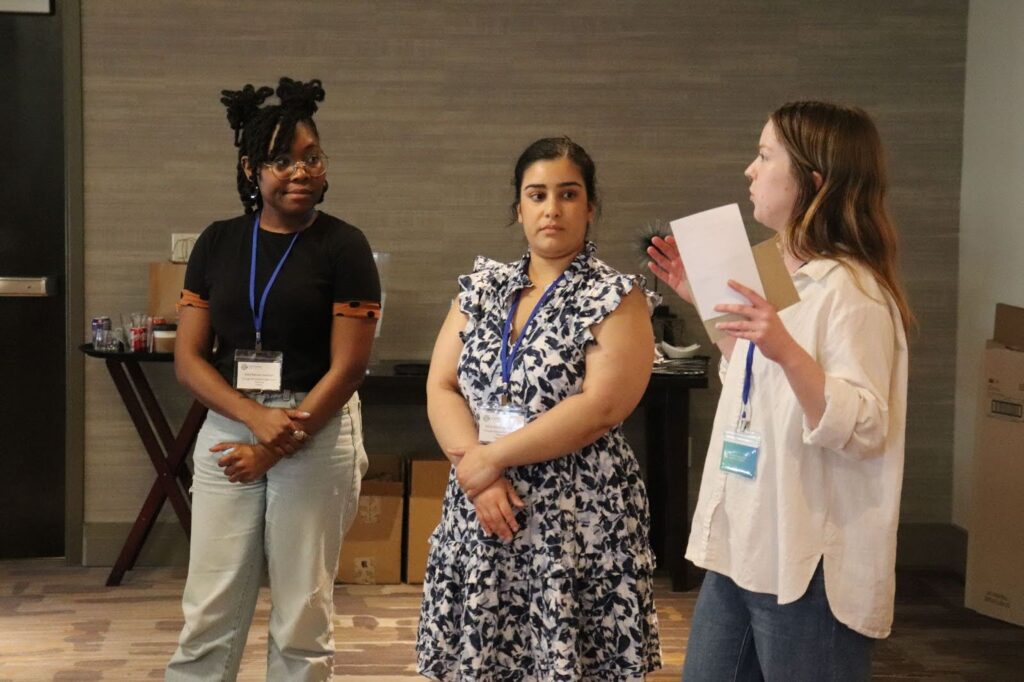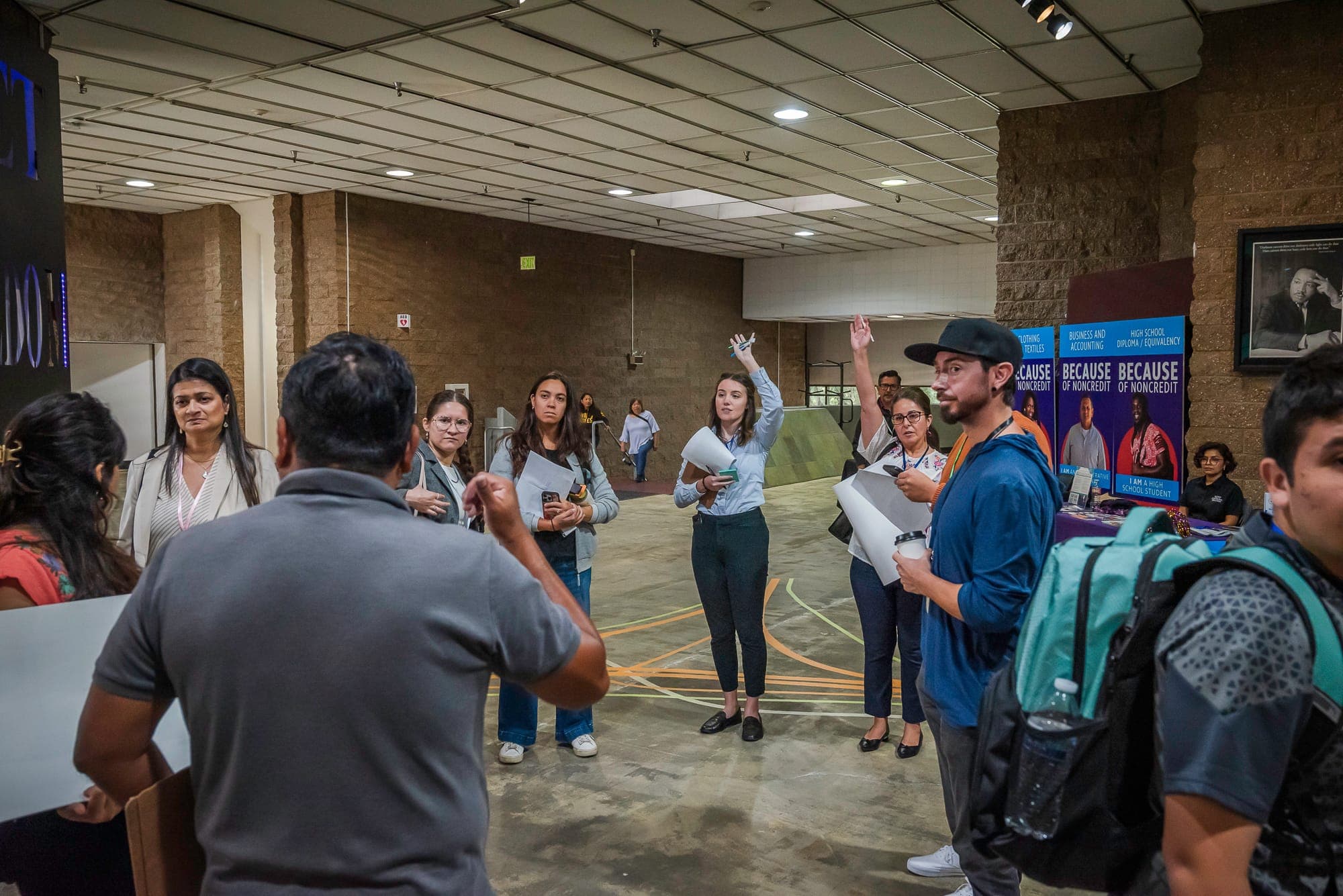
News
By Marian Liou, October 14, 2025
The Chicago Metropolitan Agency for Planning (CMAP), the metropolitan planning organization (MPO) for the greater Chicago region, is in a moment of transformation. Alongside new investments in agency-wide systems, processes, and transparency, the organization is exploring how arts and culture can move from being individual-led activities to becoming a more intentional part of planning practice. The Culture & Community Network (CCN) has offered CMAP staff both inspiration and validation: arts and culture can be an approach for planning itself, not merely an afterthought or add-on.

Background
Elizabeth Miller began her career in the arts world, working in a college gallery and then at a regional grantmaking body in Charlotte, North Carolina. Her research on equity efforts in arts and culture introduced her to civically engaged artists whose work deepened her interest in the relationship between arts, planning, and the collective imagination needed to envision a better society.
Asha Barnes studied anthropology and uses poetry as her artistic outlet. At CMAP, she has explored zines as a creative engagement tool, an approach she credits to a former colleague’s innovation. For Asha, CCN combines two passions—storytelling and planning.
Sema Abulhab has long been interested in the arts, languages, and design. As part of CMAP’s engagement team, she leads youth engagement and enjoys infusing creativity into planning processes. CCN provided her with a supportive network of peers who share her belief that creative approaches can and should be central to planning.
Arts and culture efforts in planning and engagement
Arts integration at CMAP has so far been sporadic and project-dependent. Early examples included artists leading screen-printing activities at community events, where residents could design images for tote bags. Zines have been another recurring creative format, carried forward by Asha and Sema in different projects. These efforts have shown promise but have often depended on individual initiative and available grant funding rather than being built into the agency’s process.
Now, CMAP is at a potential turning point. Leadership is prioritizing agency-wide efforts aimed at streamlined, transparent governance and management that, while technical, open the door to embedding creative engagement earlier and more consistently. Staff see an opportunity to pair these internal changes with “easy wins” in engagement: small-scale, replicable creative practices that others across the agency can adopt.
Challenges along the way
Like many MPOs, CMAP faces the challenge of scale. Individual creative experiments have happened, but without a system to gather, document, and inventory past arts-based approaches, knowledge remains siloed. Staff are also aware of the risk that creativity remains an add-on at the tail end of projects, rather than being part of the process from the beginning.
Lessons learned
Through CCN, the CMAP team has reinforced several insights:
- Don’t say no to yourself—ask questions first! Don’t assume something won’t be allowed; often creative engagement happens by experimenting with possibilities.
- Executive priorities matter. Arts integration must be framed in ways that align with agency-wide goals, such as transparency, good governance, and data-driven planning.
- Make the “impossible,” possible. Imagining the most “off-the-wall” idea and then breaking that down into what’s possible in the moment is a powerful way to spark innovation.
- Don’t wait for permission. Some of CMAP’s most successful experiments, like zines, weren’t formally approved in advance; they became celebrated by proving their value.
The team also values CCN’s peer learning model. For Elizabeth, this is her first professional development opportunity that feels both national in scope and grounded in real practice. For Asha and Sema, the network has provided affirmation that others at MPOs are grappling with the same questions and making meaningful progress.
Looking ahead
CMAP’s immediate focus is an upcoming agency event and the next regional visioning plan. Staff are excited about testing new engagement formats for elected officials and residents alike and using lessons from CCN to ensure resident voices are centered.
Looking further ahead, CMAP staff are considering:
- Building an inventory of past creative engagement strategies to guide future projects.
- Using CMAP’s technical assistance program as a testing ground for small, replicable creative methods.
- Embedding arts and culture considerations into project management and agency processes from the start.
CMAP’s story underscores that integrating arts and culture into planning is less about creating new standalone programs and more about making creativity part of how planning is practiced. For an agency in transition, this might mean documenting past efforts, building on small experiments, and aligning arts-based approaches with broader organizational priorities. CCN is helping staff imagine what’s possible while also taking incremental steps now to set the foundation for embedding arts and culture at the heart of regional planning in the future.
Related News

© 2025 Smart Growth America. All rights reserved
Site By3Lane Marketing






















